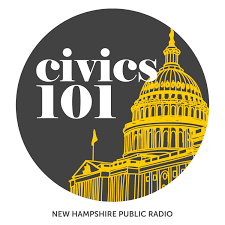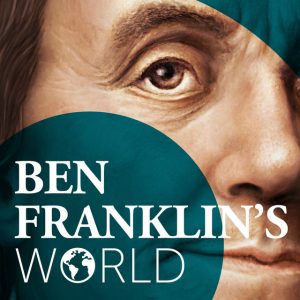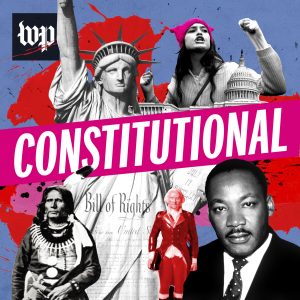Students are making their voices heard across the country and calling for action on issues they want addressed. Over the past few weeks, students in at least three states, Massachusetts, Minnesota, and here in Oregon, have seen students walk out of their schools in protest of a wide variety of issues. In Massachusetts, high school students in Medford left their classrooms in response to growing violence at their school. In southern Oregon, after the reinstatement of district staff whom students saw as hostile to the trans community, high school students walked out of their school to show support for the LGBTQ+ community. In November 2021, middle school students at a Portland-area school staged a walkout in response to what they reported as a refusal by the teachers and administration to address the growing problem of sexual assault and harassment happening in their school. In Minnesota and Tigard, Oregon, students left their classes and held demonstrations because of growing environments of hate and racism within their schools. In both cases, student communities were moved to action in response to both hostile school environments for students of color, as well as hate-filled social media posts that circulated among the student body.
These students are not only fighting for what they believe in, but with their actions, they are also honoring the fundamental rights inscribed in the United State’s Constitution. With their collective actions, these students utilized their freedom of speech, and rights to peaceful assembly. These cornerstone rights, as well as seven others, make up what has been called the foundation of American security and liberty: the Bill of Rights. The Bill of Rights includes the first 10 amendments of the Constitution, which were enacted to protect an array of freedoms including freedom of religion, freedom of press and freedom from unreasonable searches and seizures.
The Bill of Rights was ratified on December 15, 1791. Some 150 years later, in November 1941, President Franklin Roosevelt issued a proclamation dedicating December 15 as Bill of Rights Day, to honor the anniversary, and to draw a stark contrast between American democracy and growing fascism around the globe. It was a year after the end of World War 2 when the U.S. would celebrate Bill of Rights Day again, with President Truman issuing a proclamation at the behest of Congress. Then, in 1962, President John Kennedy officially proclaimed that every December 15th from that year onward would be Bill of Rights Day.
This week’s Current Events resources examine the Bill of Rights. The resources shared provide context and history around the first ten amendments as well as their impact on American society.
Looking for more current events resources? Sign up at our We the Teachers Educator Resource Community page, where you can find all of our Current Events, and learn about our other programs!
Essential Questions, Vocabulary & Extend the Resources:
- How are students’ actions protected by the Bill of Rights?
- What fundamental liberties are protected by the Bill of Rights?
- How has the Bill of Rights impacted American society?
- In your opinion, which freedoms guaranteed by the Bill of Rights are most important in today’s society?
- Why may it be important to nationally recognize the Bill of Rights by having its own ‘day’?
- How has the Bill of Rights impacted people and countries outside of the United States?
- If the Constitution and the Bill of Rights were being drafted today, which freedoms do you think should be added or subtracted from the original ten?
Click here for a hardcopy of the Essential Questions & Bill of Rights Day Vocabulary
Click here for a hardcopy of the Extend the Resources handout with suggested lesson activities and extensions
Videos:
Podcasts:
Civics Shorts: The Bill of Rights, Civics 101, NPR
Akhil Reed Amar on the Bill of Rights, We The People, National Constitution Center, December 22, 2016
American Legal History & the Bill of Rights, Ben Franklin’s World, October 8, 2019
Framed, Constitutional, The Washington Post, July 24, 2017
Background Resources:
Bill of Rights Day, National Archives
Bill of Rights Day, National Today, December 15, 2021
Happy Birthday Bill of Rights, National Constitution Center
Recent Articles:
Rediscovering America: A Quiz for Bill of Rights Day, The Palm Beach Post, December 8, 2021
Bill of Rights Day Explained, CNN, December 15, 2019
Bill Of Rights Day: 8 Interesting Facts About Constitution’s First Ten Amendments, International Business Times, December 15, 2017
Students are fed up with racist slurs and bullying. Now they’re walking out of class, KPTV, December 5, 2021
Students State Walkout to Protest Video Featuring Racial Slurs, Newsweek, December 2, 2021
Tigard High Schools walk out of class to protest racist video posted on TikTok, KGW, December 1, 2021
Students walk out of Portland middle school, demand response to sexual harassment allegations, OPB, NPR, November 3, 2021
3 arrested during Grants Pass High School walkout in support of LGBT+ community, KGW, November 17, 2021
Recent Editorials:
229 years ago, because of the Bill of Rights, America became America | Opinion, Tennessean, December 13, 2020
Bill of Rights Day: We keep our freedoms by teaching them, Pittsburgh Post-Gazette, December 14, 2020
Articles for Elementary Students:
Bill of Rights (3rd – 5th Grade), National Constitution Center
Constitutional Law Lesson Plan: Do I Have a Right? Game, BrainPop Educators
We the Civics Kids Lesson 3: The Bill of Rights, National Constitution Center
The Bill of Rights, Ducksters
Lesson Plans:
The Bill of Rights, The Bill of Rights Institute
You’ve Got Rights!, iCivics
Why the Bill of Rights Matters to You, Annenberg Classroom
Our Constitution: The Bill of Rights, The Gilder Lehrman Institute of American History
The Bill of Rights Choice Board, C-SPAN Classroom
The Bill of Rights: Debating the Amendments, Library of Congress
Visitor from Outer Space, Teaching Civics
Media & News Literacy Lesson Plans:
Media Literacy Resources – Newseum
News & Media Literacy Lessons – Common Sense
Media Misinformation, Viral Deception, and «Fake News» – University of Wyoming
Evaluating Sources in a ‘Post-Truth’ World: Ideas for Teaching and Learning About Fake News – New York Times Lessons




